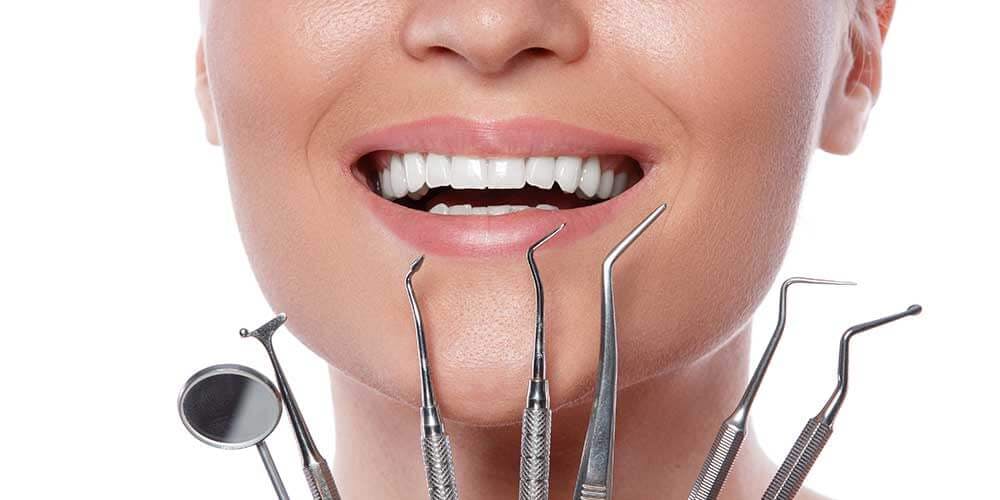Posted by Dr. Taner Cakmak on Thu, 18 Apr 2024
Kanata South Dental - Dentist Kanata

The goals of smile design can vary depending on the individual's needs and desires, but generally, they include:
- Enhancing Aesthetics: Improving the overall appearance of the smile by addressing issues such as tooth discoloration, misalignment, gaps, chips, and uneven gum lines.
- Restoring Function: Ensuring that the teeth and bite function properly, allowing for efficient chewing, speaking, and overall oral function.
- Improving Confidence: Boosting self-esteem and confidence by creating a smile that the individual feels proud of and comfortable with.
- Preserving Natural Teeth: Minimizing the need for invasive procedures by utilizing conservative and minimally invasive techniques whenever possible.
- Customization: Tailoring the smile design to the individual's unique facial features, personality, and preferences to achieve a natural and harmonious result.
- Longevity: Creating a smile design that is durable and long-lasting, providing both aesthetic and functional benefits for years to come.
These goals are typically achieved through a combination of cosmetic dental procedures, orthodontics, and other techniques designed to enhance the overall appearance and function of the smile.
HOW LONG DOES THE SMILE DESIGN LAST
The longevity of a smile design can vary based on several factors, including the specific treatments involved, the quality of materials used, oral hygiene practices, lifestyle habits, and natural aging processes. Here's a general idea of how long different smile design treatments can last:
- Teeth Whitening: The effects of professional teeth whitening treatments can last anywhere from several months to a couple of years, depending on factors such as diet, oral hygiene, and habits like smoking. Periodic touch-ups may be needed to maintain the desired level of whiteness.
- Dental Veneers: Porcelain veneers are highly durable and can last 10 to 15 years or more with proper care. However, they may need occasional replacement or repair if they become damaged or worn over time.
- Dental Crowns: Crowns made from high-quality materials like porcelain-fused-to-metal or zirconia can last 10 to 15 years or longer. Regular dental check-ups and maintenance are essential to ensure their longevity.
- Orthodontic Treatments: The results of orthodontic treatments, such as braces or clear aligners, can be permanent if the patient wears retainers as instructed after the active treatment phase. Retainers help maintain the corrected tooth positions and prevent relapse.
- Gum Contouring: If gum contouring is performed to reshape the gum line or address excessive gum tissue, the results can be long-lasting. However, proper oral hygiene and regular dental care are necessary to prevent gum issues in the future.
- Composite Bonding: Dental bonding with composite resin can last several years, but it may require periodic touch-ups or replacement due to staining, wear, or chipping.
It's important to note that natural aging processes, changes in oral health, and lifestyle factors can influence the longevity of smile design treatments. Regular visits to the dentist for check- ups, professional cleanings, and following recommended oral care practices can help extend the lifespan of your smile makeover.
WHAT IS THE KEY ASPECT OF DIGITAL SMILE DESIGN
Digital Smile Design (DSD) is an innovative approach in dentistry that combines technology with artistic design to plan and create customized smiles for patients. Here are some key aspects of Digital Smile Design:
- Digital Imaging: DSD utilizes advanced digital imaging technology to capture detailed images of the patient's face, teeth, and smile. These images are then analyzed and manipulated using specialized software to design a virtual blueprint of the desired smile.
- Facial Analysis: DSD incorporates facial analysis to consider the patient's facial features, symmetry, lip dynamics, and overall aesthetics. This helps in creating a smile design that complements the patient's unique facial structure and enhances their natural beauty.
- Simulation: With DSD software, dentists can simulate the planned smile design in real- time, allowing patients to preview and visualize the expected outcome before any treatment begins. This interactive process enables patients to provide feedback and collaborate with the dentist in designing their ideal smile.
- Treatment Planning: Based on the digital simulations and patient input, a comprehensive treatment plan is developed. This may include various cosmetic and restorative dental procedures such as veneers, crowns, orthodontics, gum contouring, and teeth whitening, among others.
- Communication Tool: DSD serves as a powerful communication tool between the dentist and the patient, facilitating clear discussions about treatment options, expectations, and outcomes. It helps align the patient's goals with the dentist's expertise, leading to more satisfying results.
- Precision and Predictability: By digitally designing the smile and meticulously planning the treatment steps, DSD offers precision and predictability in achieving the desired aesthetic results. This can lead to improved patient satisfaction and confidence in their smile makeover journey.
Overall, Digital Smile Design revolutionizes the way smile makeovers are planned and executed, offering a personalized, interactive, and visually-driven approach to achieving beautiful and natural-looking smiles.
DO YOU NEED A SMILE DESIGN?
If you think you need a smile design, please call us 613-519-1400. Dr. Taner and his professional team would be happy to help you.
Dentist Kanata
We will gladly answer any questions you may have.
Ask QuestionsKanata South Dental offers the ability to request your dentist appointments online. Schedule an appointment now!
Book OnlineBy filling out the New Patient Forms ahead of time you will save significant time on your visit.
New Patient FormsLatest News
Veneers vs. Implants: What's the Difference and Which One is Right for You?
Fri, 17 Oct 2025If you're looking to improve your smile, you’ve probably come across two popular dental treatments: veneers and implants. While both can make a big differen...
Continue Reading